Via Francigena Part 13 route map |
Siena ~ San Quirico d’Orcia ~ Castiglione d’Orcia ~ Radicofani |
Distance: 103km (1,894/1,900km) |
S l o w time: 6 days |
Golden green fields of the Valdorcia | Cypress tree drives | Perfect Tuscan villages | Hot pools |
It’s our last post on the Via Francigena in Tuscany! And we are heading south of Siena into the Valdorcia, which you could say is saving the best until last.
Yep, walking through the Valdorcia (or Val d’Orcia, meaning the valley that the river Orcia runs through – go figure) is perhaps the most quintessentially Tuscan thing you could imagine. Think golden rolls of hills, cypress drives and impossibly beautiful hilltop villages.
We had never explored the Valdorcia before, but we had heard nothing but good things. Our Via Francigena guidebooks were full of phrases like ‘startling panoramic views’ and ‘light like you’ve never seen before’ and ‘the best of the Via Francigena’. So we were a teensy bit excited to walk this section.
And we WEREN’T disappointed.
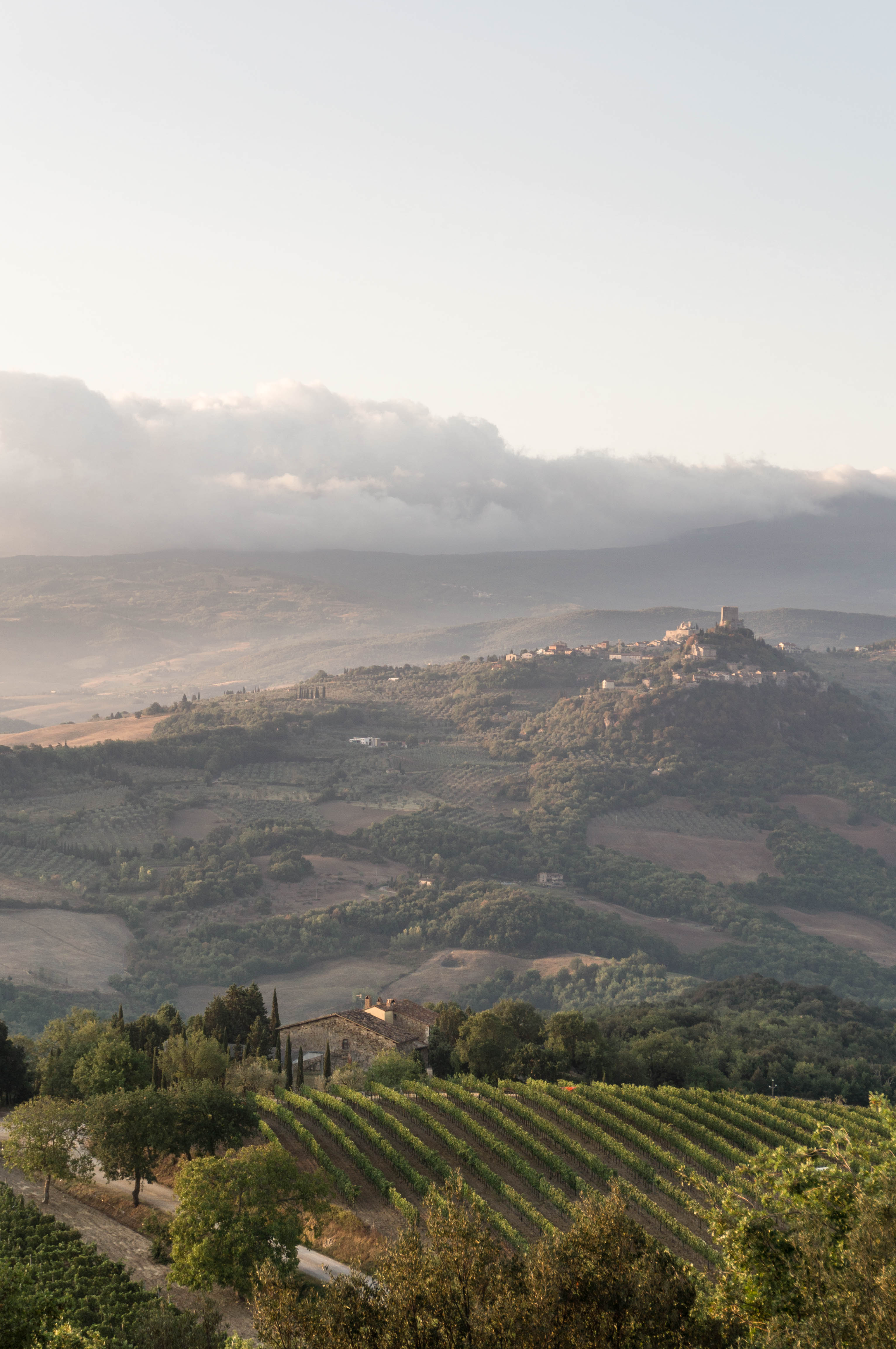
To kick it off, we spent a couple of glorious days first in Siena. A beautiful sunlit medieval city, it’s one of the biggest and most important stops on the whole Via Francigena!
The route takes you straight to the heart of the city, the Piazza del Campo. A giant shell-shaped square paired with tower Torre del Mangia, it’s world famous as the (steep!) racetrack for Siena’s Palio, an historic horserace between the districts of the city.
The rivalry between those districts (contrade) runs deep. And it’s this history that gives Siena a certain something: a charisma, a uniquely atmospheric feeling.
It doesn’t hurt that it’s completely gorgeous too, of course.
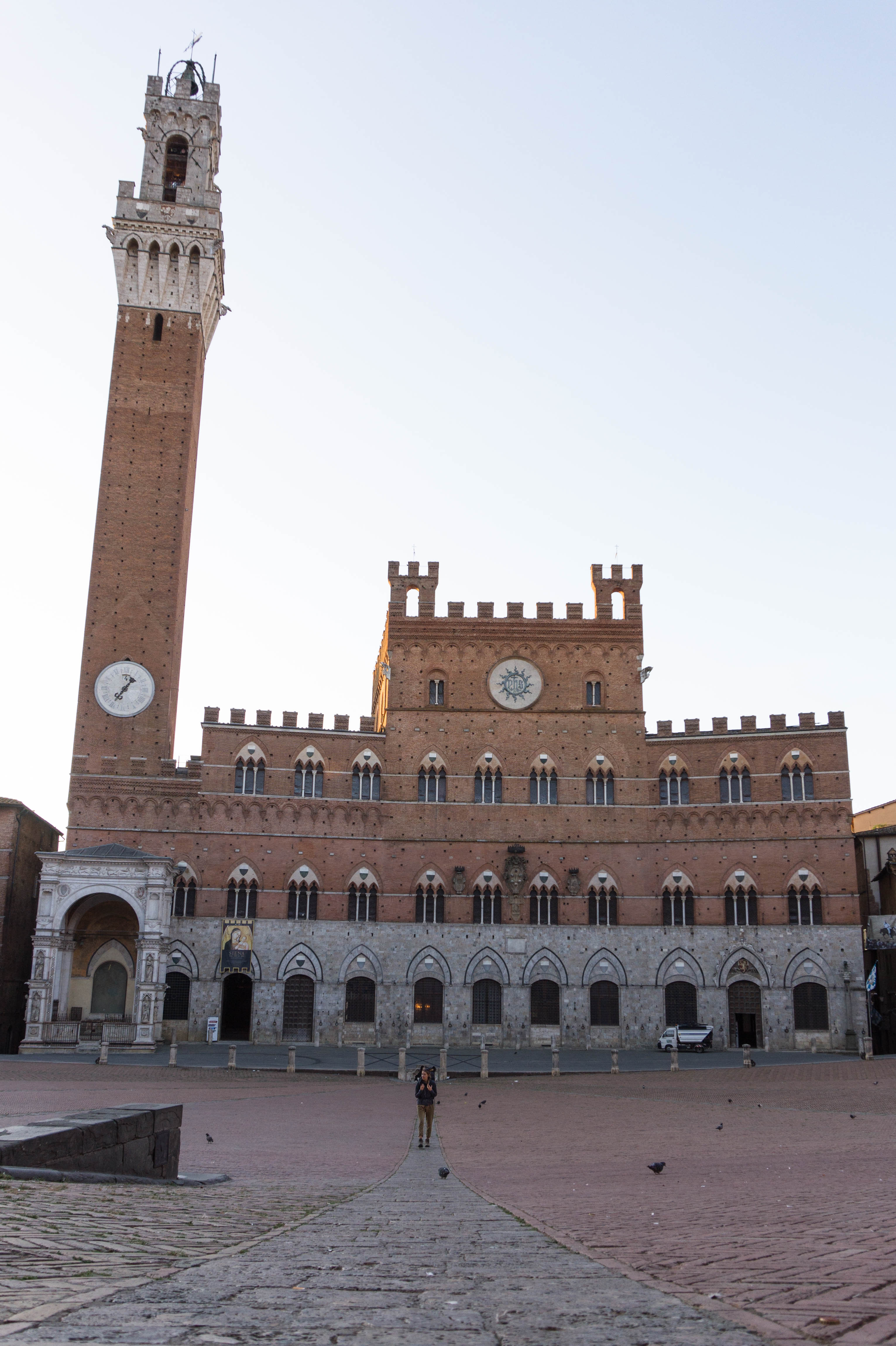
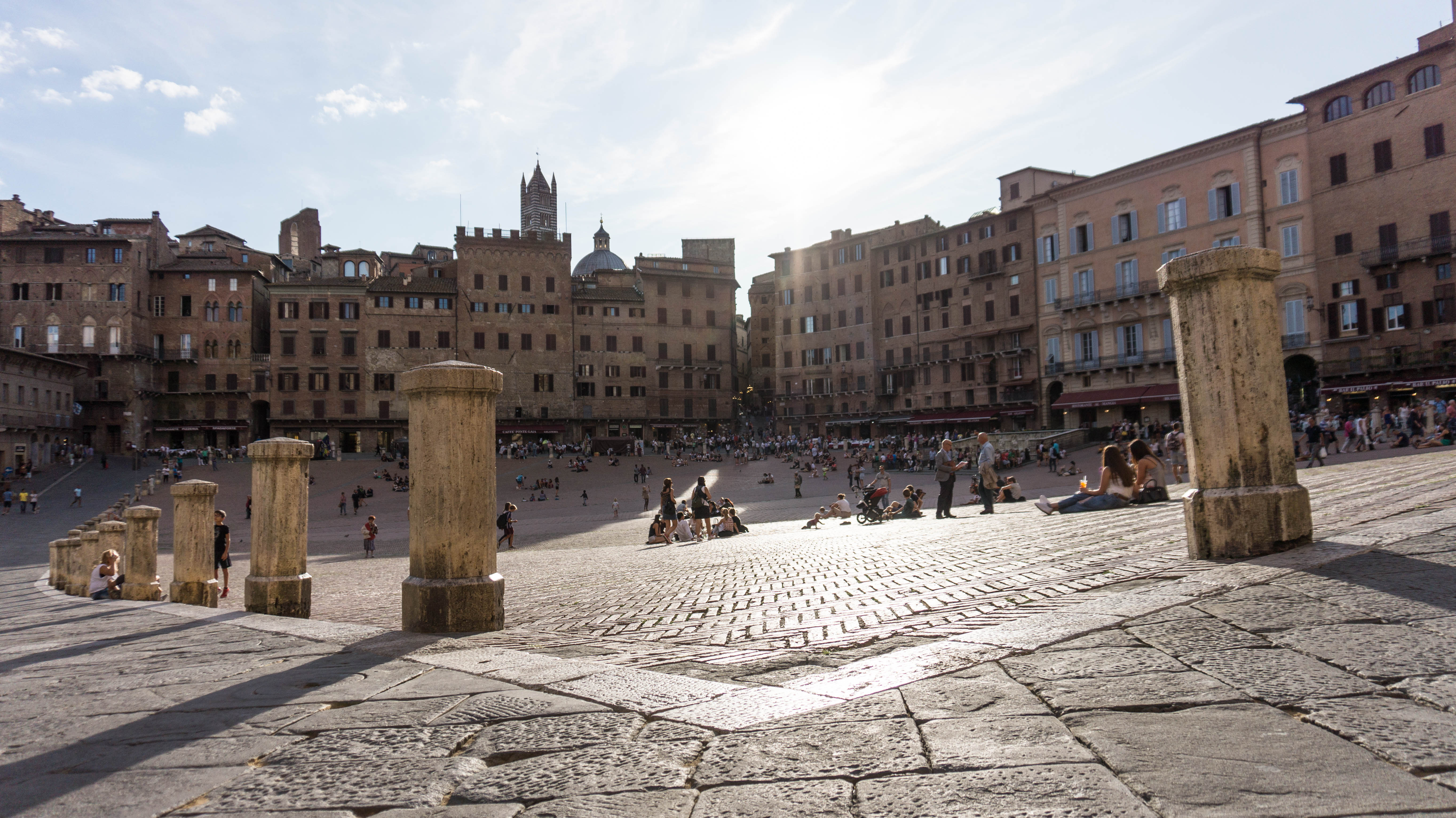
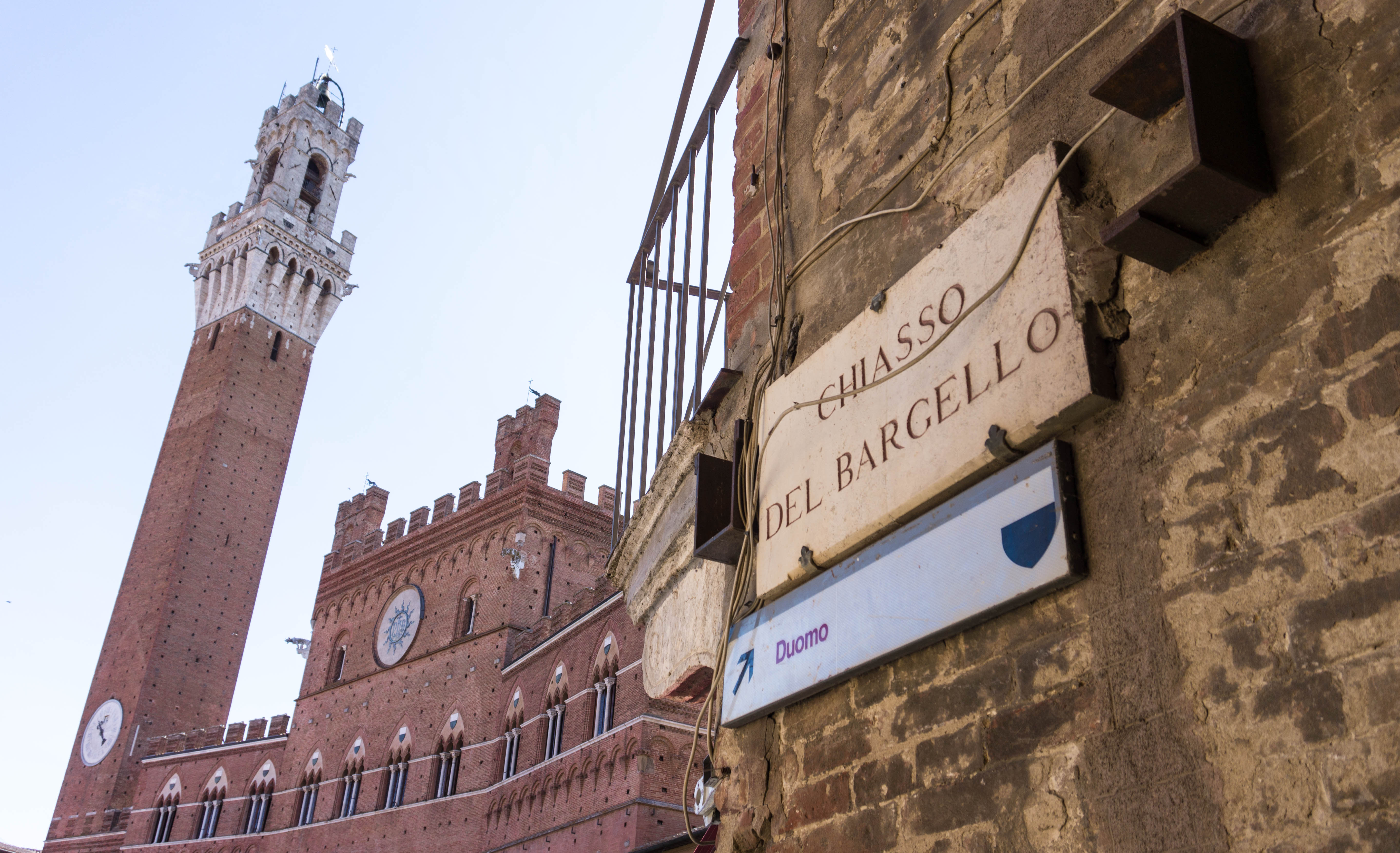
Another centrepiece of Siena on the Via Francigena is its Duomo. Now although a lot of people (sometimes us included) can be a bit ambivalent about visiting cathedrals, Siena’s is… different. Built in the 13th century, it has an exterior of towering striped marble, and an inside floor inlaid with impossibly large marble stories, taken from both the Bible and mythology.
Think Jesus one end, Socrates the other.
So if you ever step inside a cathedral, let it be under the star-flung ceiling of Siena Cathedral.
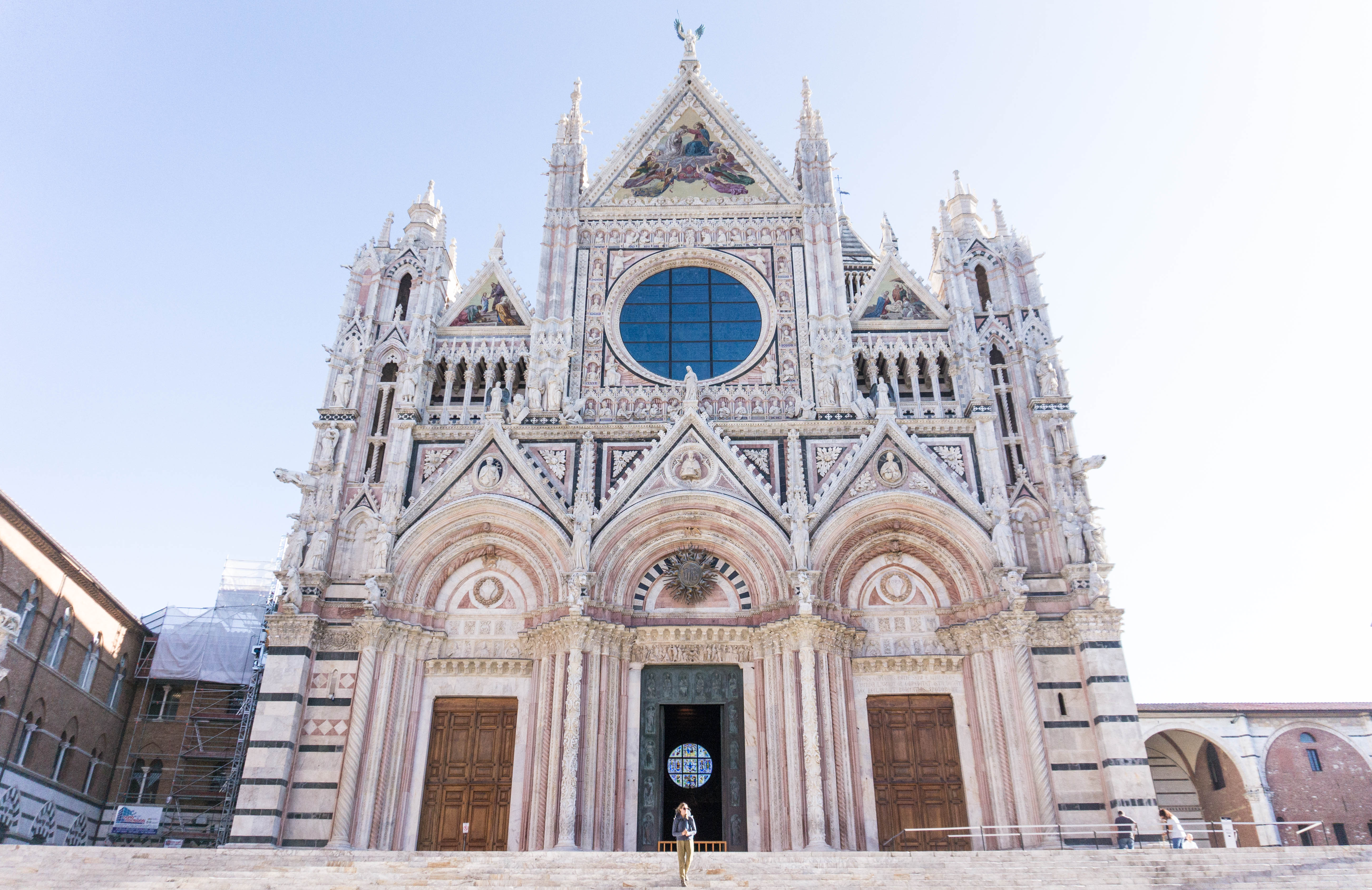
Because of its separate districts, we found just walking around Siena is one of the most interesting things to do (no surprises there). Yellow and orange streets, all decked out with fluttering flags of each contrada. Flag throwing and band rehearsals seem to take place everywhere, huge crowds marching in medieval dress. The beating of the drums reverberates into the evening, bouncing off the city walls.
Like we said, atmosphere!
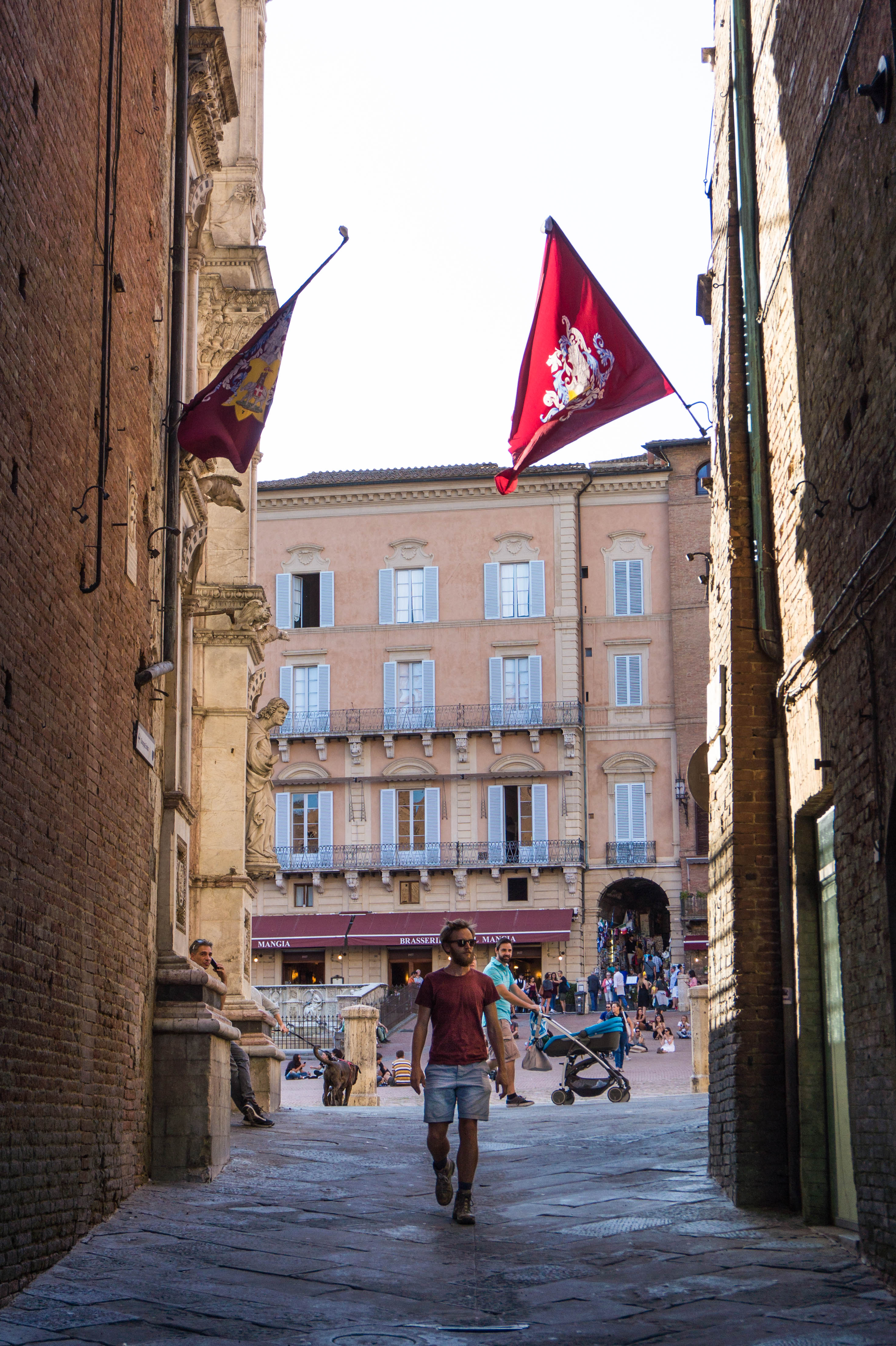
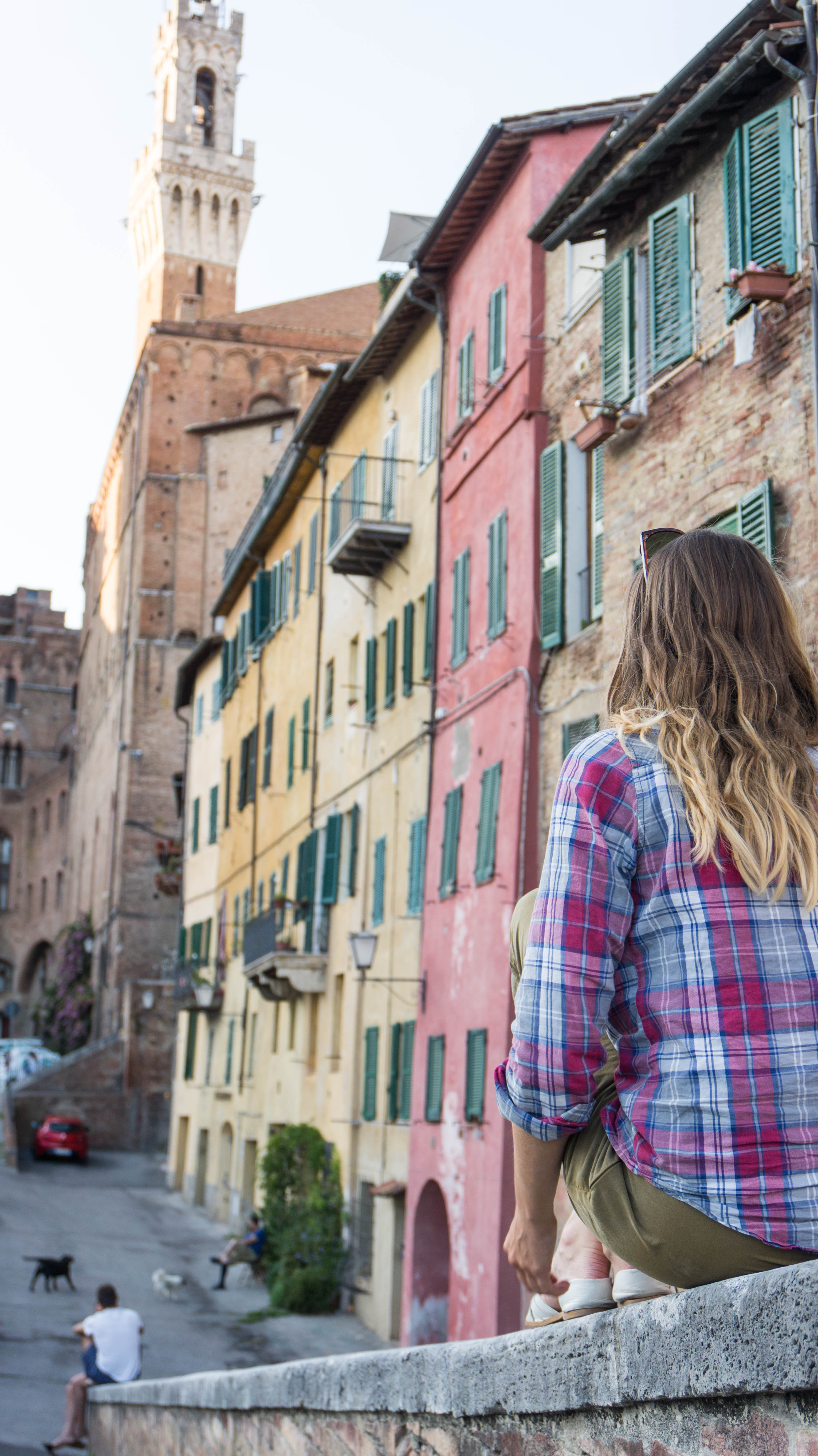
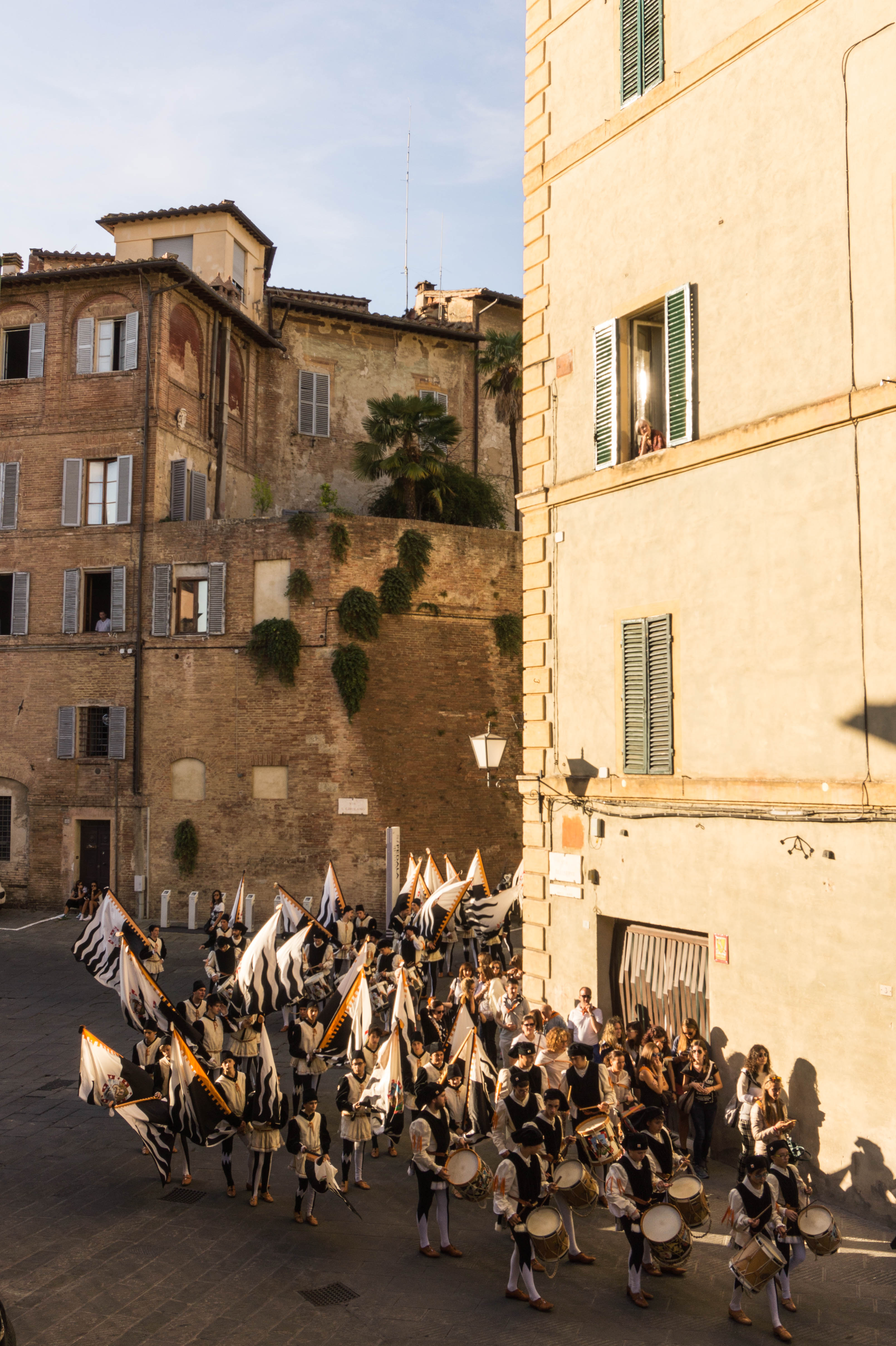
It’s a great place to explore on foot – and to leave on foot too. A cute little Via Francigena path snakes out of the city and the views back of Siena are great. From over our shoulders we watched Siena’s famous tower and cathedral slowly recede into the horizon.
There’s something about walking to and from a place that makes you appreciate it all the more.
But this is where the Valdorcia really begins. And from here until the Tuscan border 100km away might be some of the best walking on the Via Francigena.
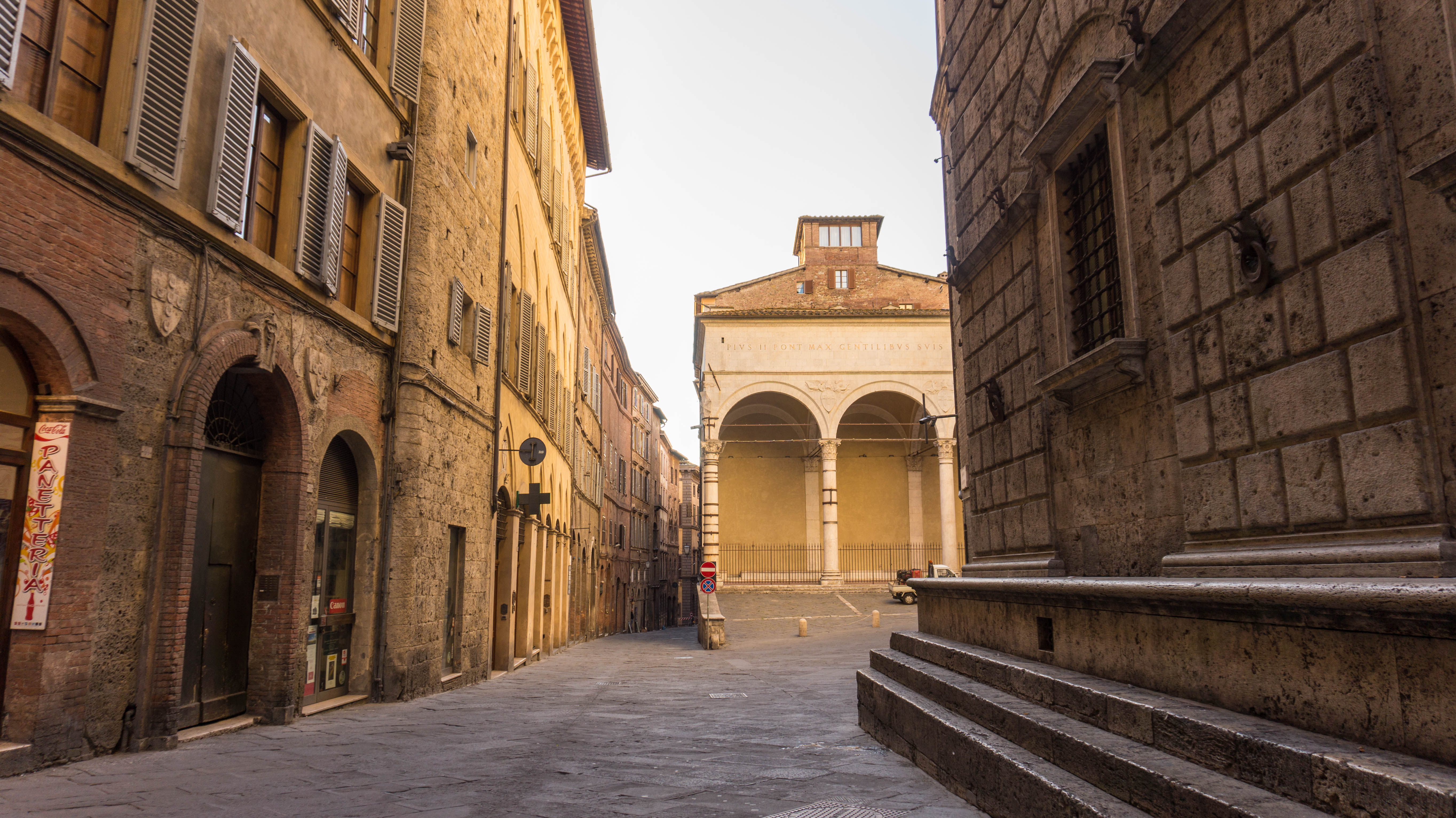
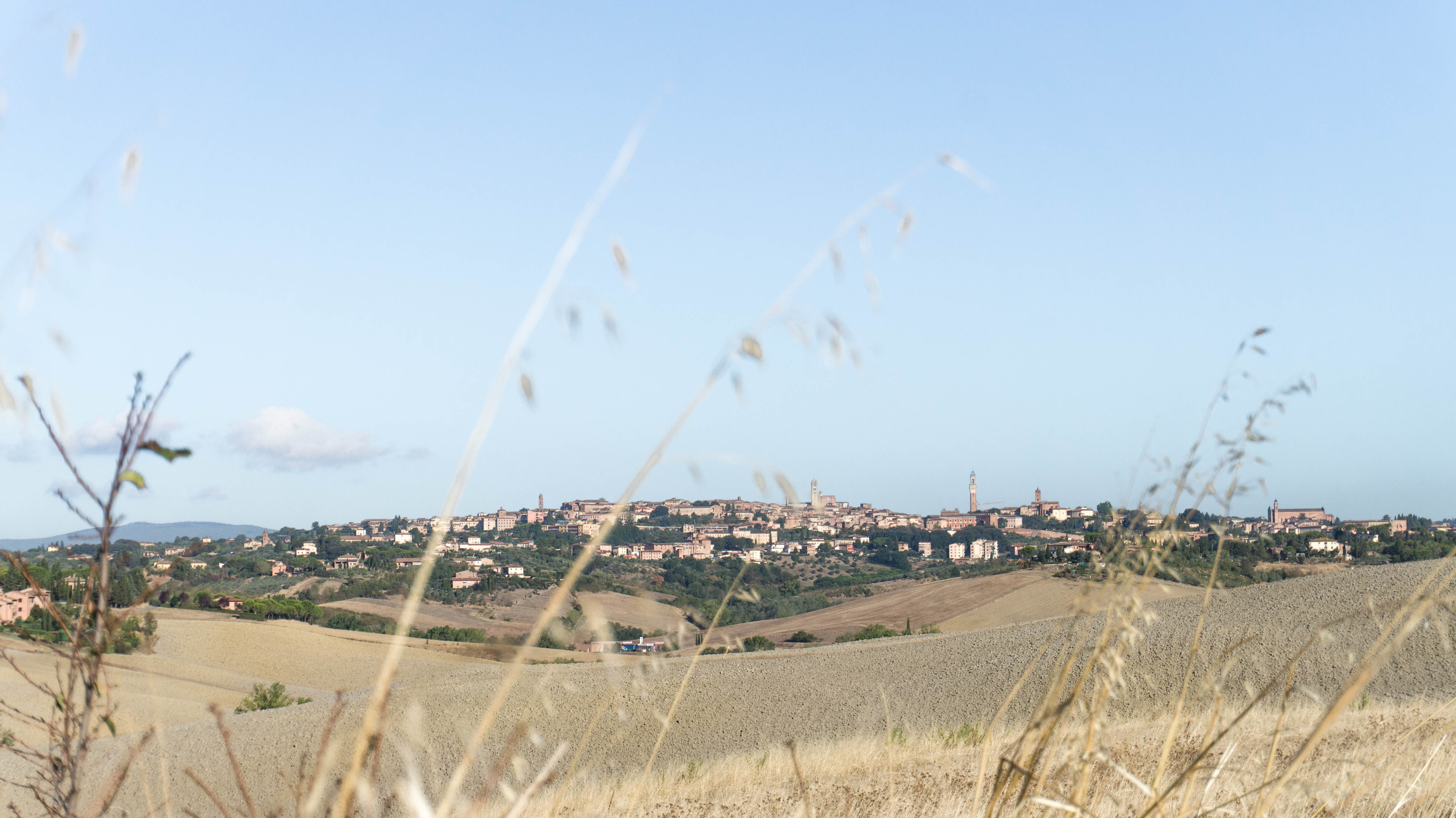
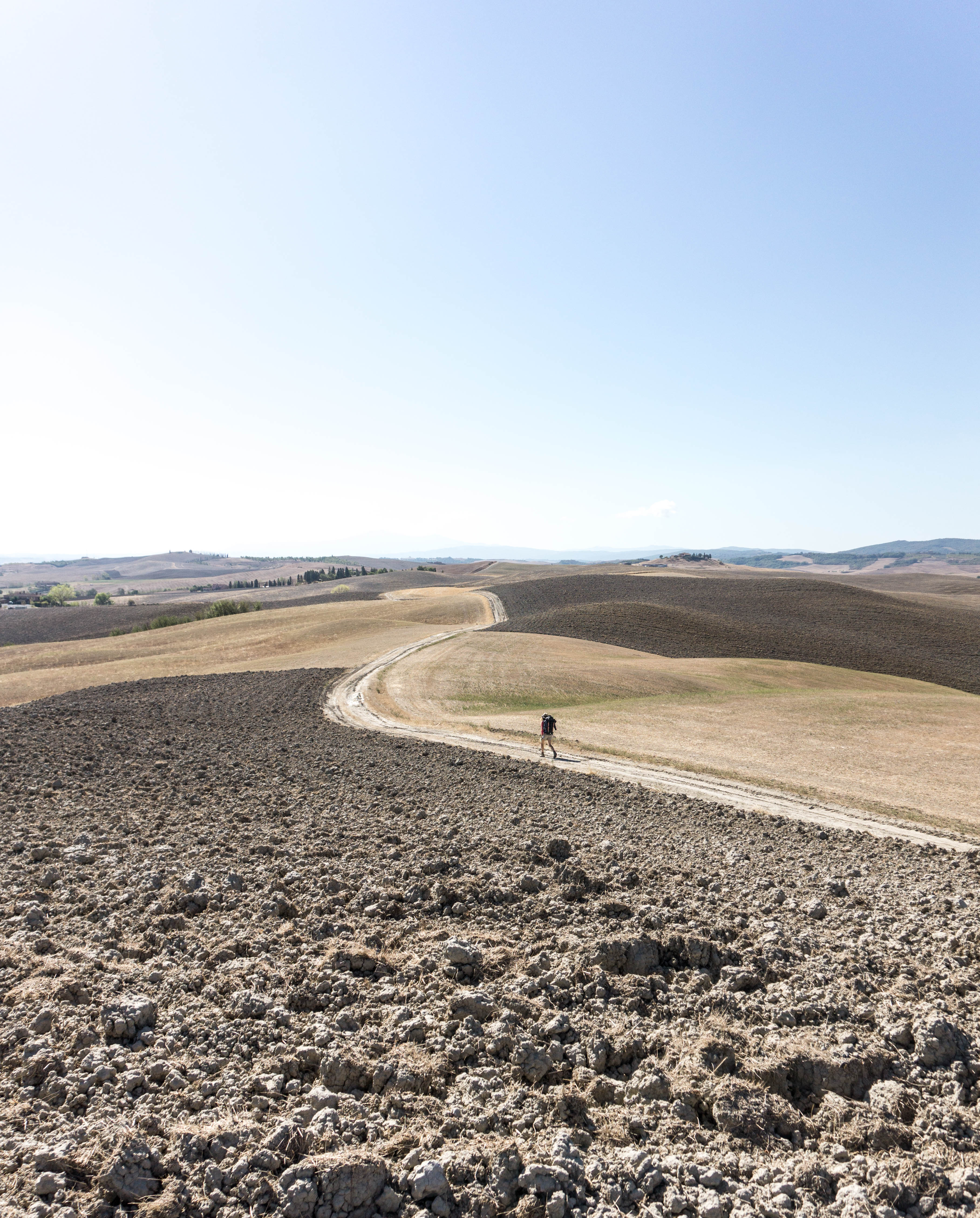
The perfectly tranquil landscape turns gold, blue, purple and orange – particularly in the morning and evening. ‘Ooooh it’s like a painting!’ We said about 1,000 times.
It’s still a working place of course: there are dogs guarding sheep in this area so it is quite important to stay on the path. But we had no problems with this, and enjoyed an amazing route past the iconic cypress tree drives and up and down the gently undulating hills.
We were heading to the reigning queen of the Valdorcia, the chic village of San Quirico d’Orcia. What a beautiful place to spend and evening and night, nestled in the hills.
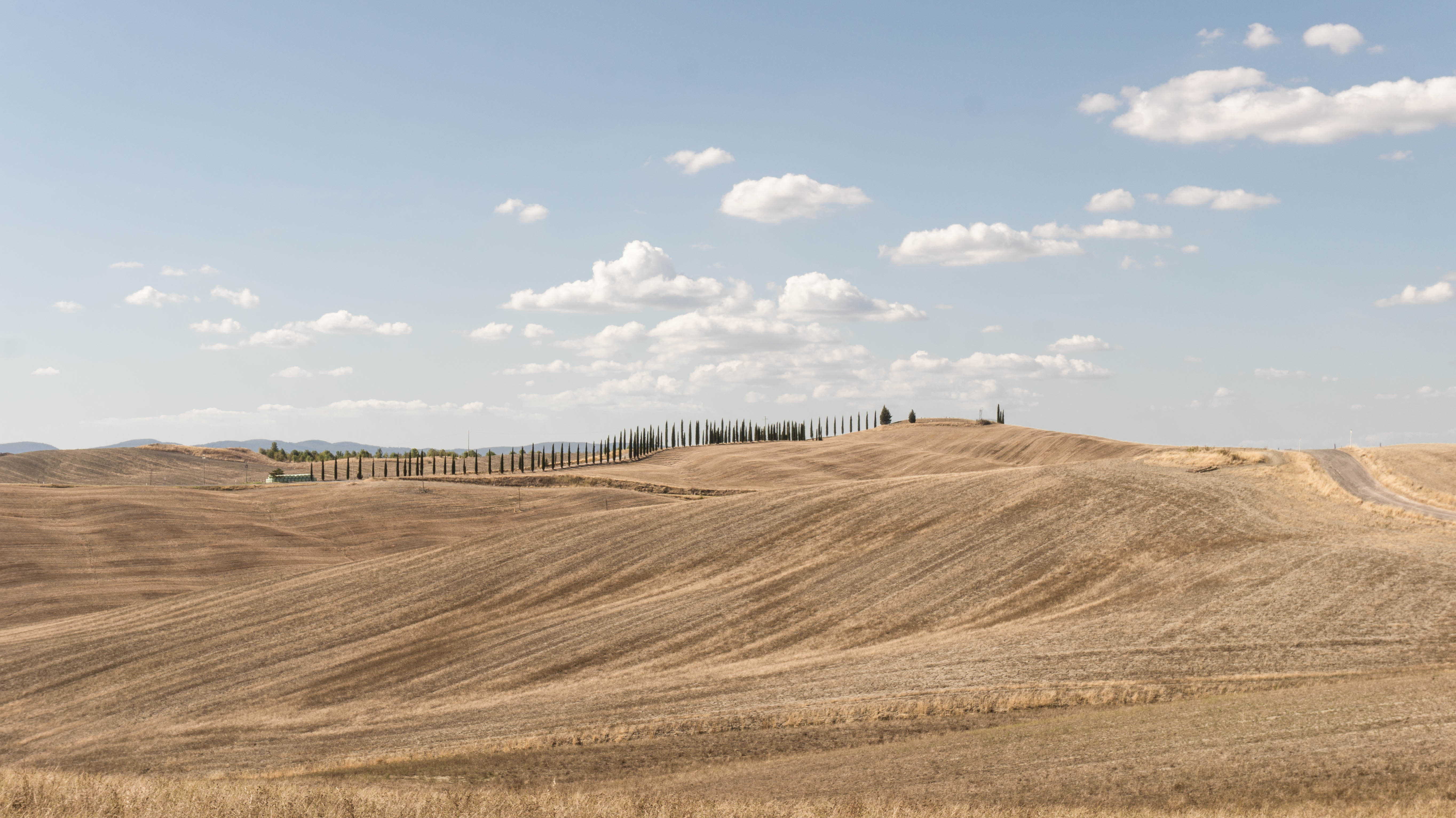
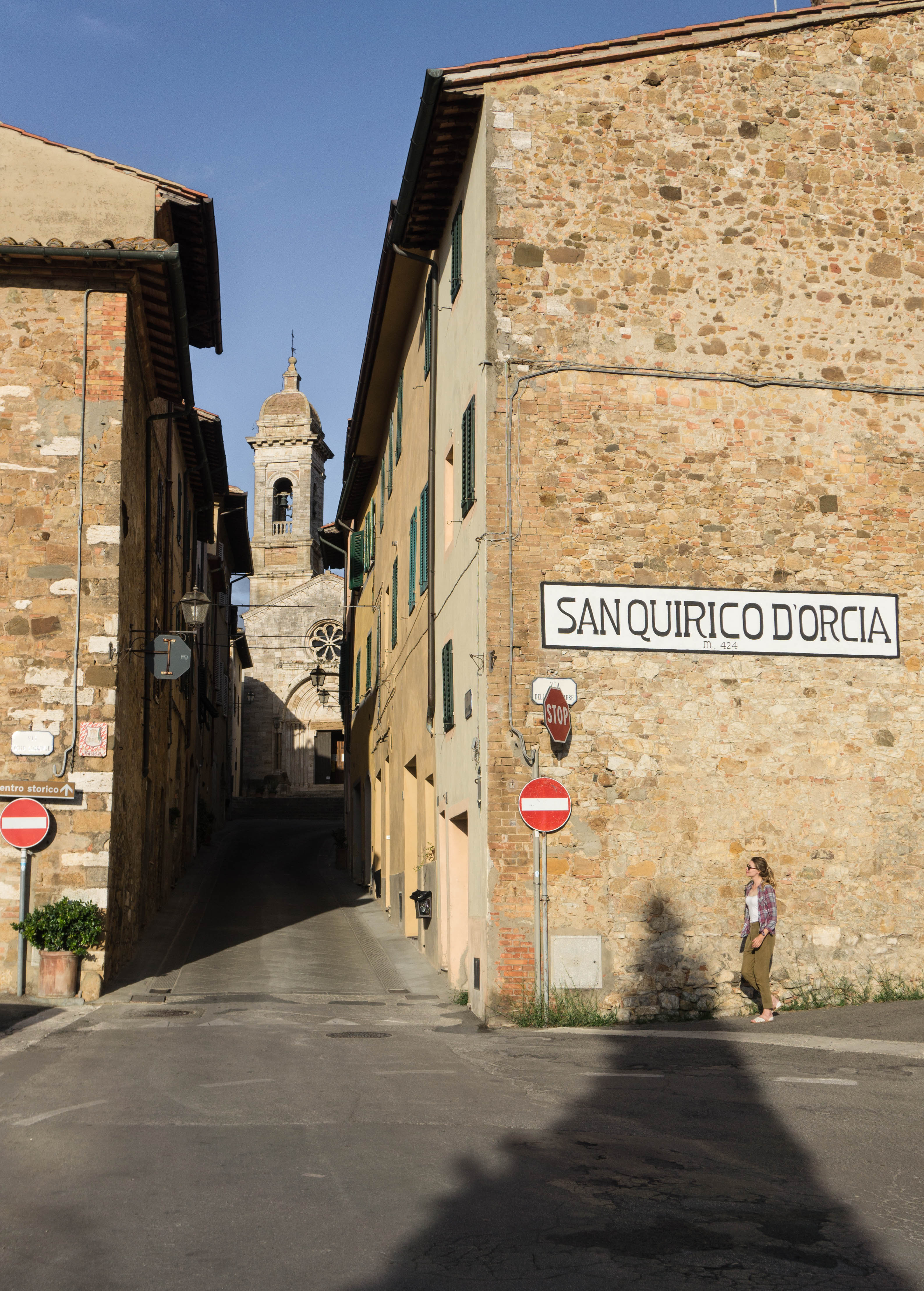
Absolutely enthralled by this golden Tuscan world at this point, the next day we passed and coffee-d happily at the elegant Bagno Vignoni, a natural bath where the main square is one large bubbling hot pool.
And beyond it is Castiglione d’Orcia, perched on a hill as peaked as a dollop of whipped cream, topped with its own tower. We made an unscheduled stop here, just because it was so beautiful.
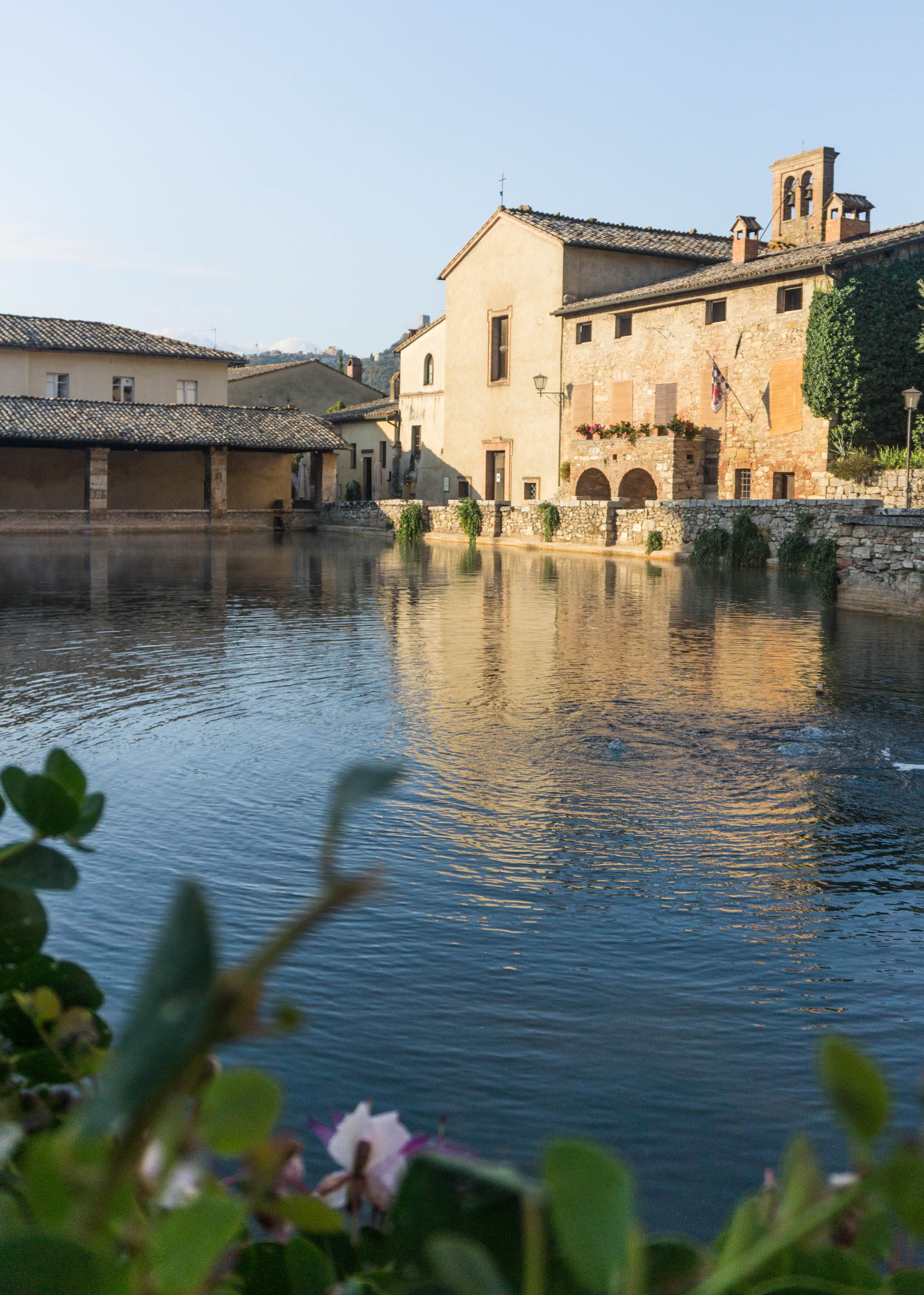
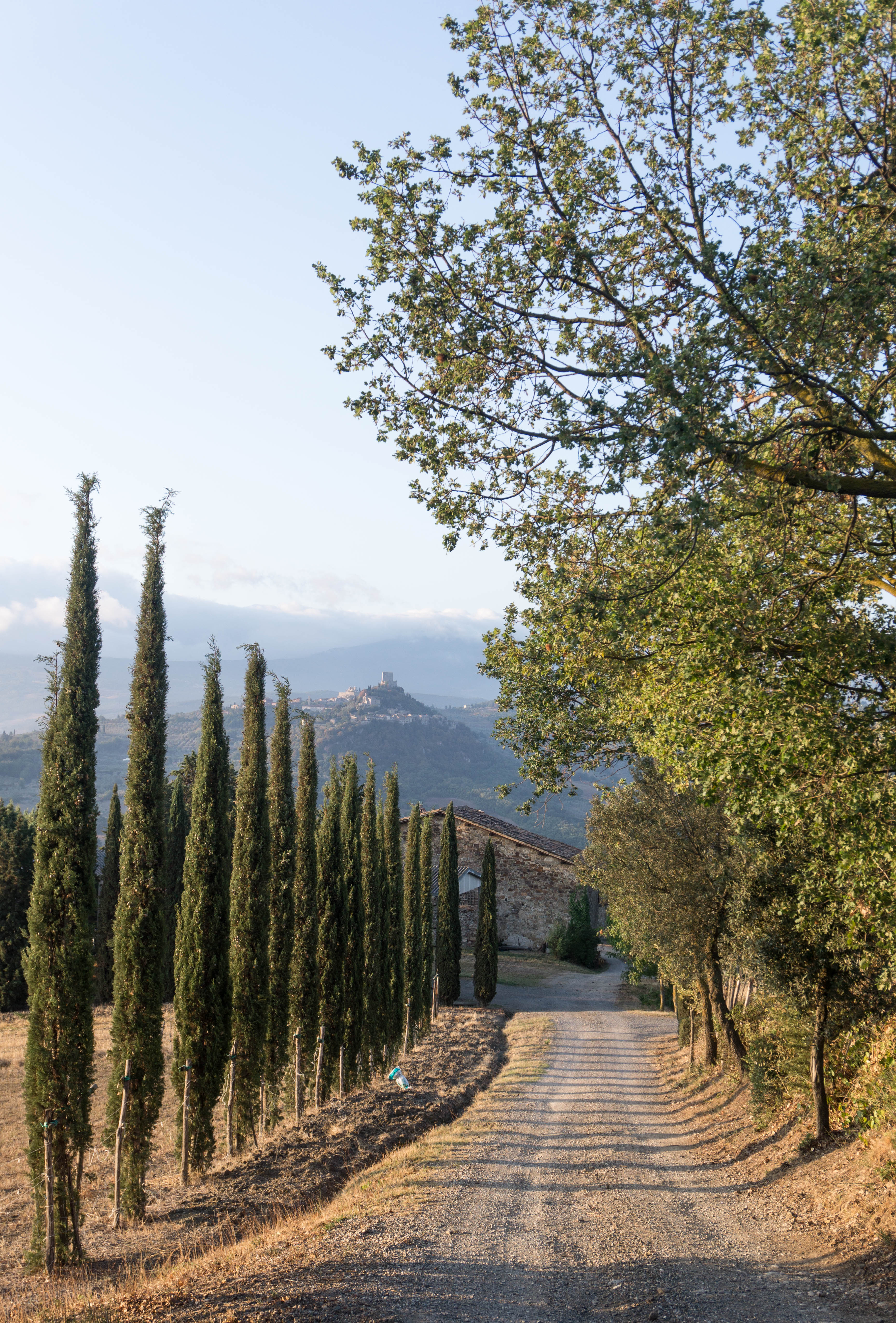
After Castiglione d’Orcia, we walked deeper into the hilly valleys, which for us in August was shimmering shades of golds and yellows. It felt like we were being overwhelmed by the beauty of the Valdorcia.
Funny thing though. On this next bit we found a lot of people decided to walk the road as the route looks pretty remote. And it is: from Castiglione to the next stop Radicofani (about 25km) we passed no water, no food stops, only the odd house.
But if you can get over that, it’s awesome! Just you and those hills, those fields, those drives. We wandered up and down, spiralling all around the valley, completely on our own. It’s walking just the way we want it. It felt like we were actually in the country, not just looking at it. It’s adventure guys!
And the Valdorcia days were some of our favourites in almost four months of walking through Europe!
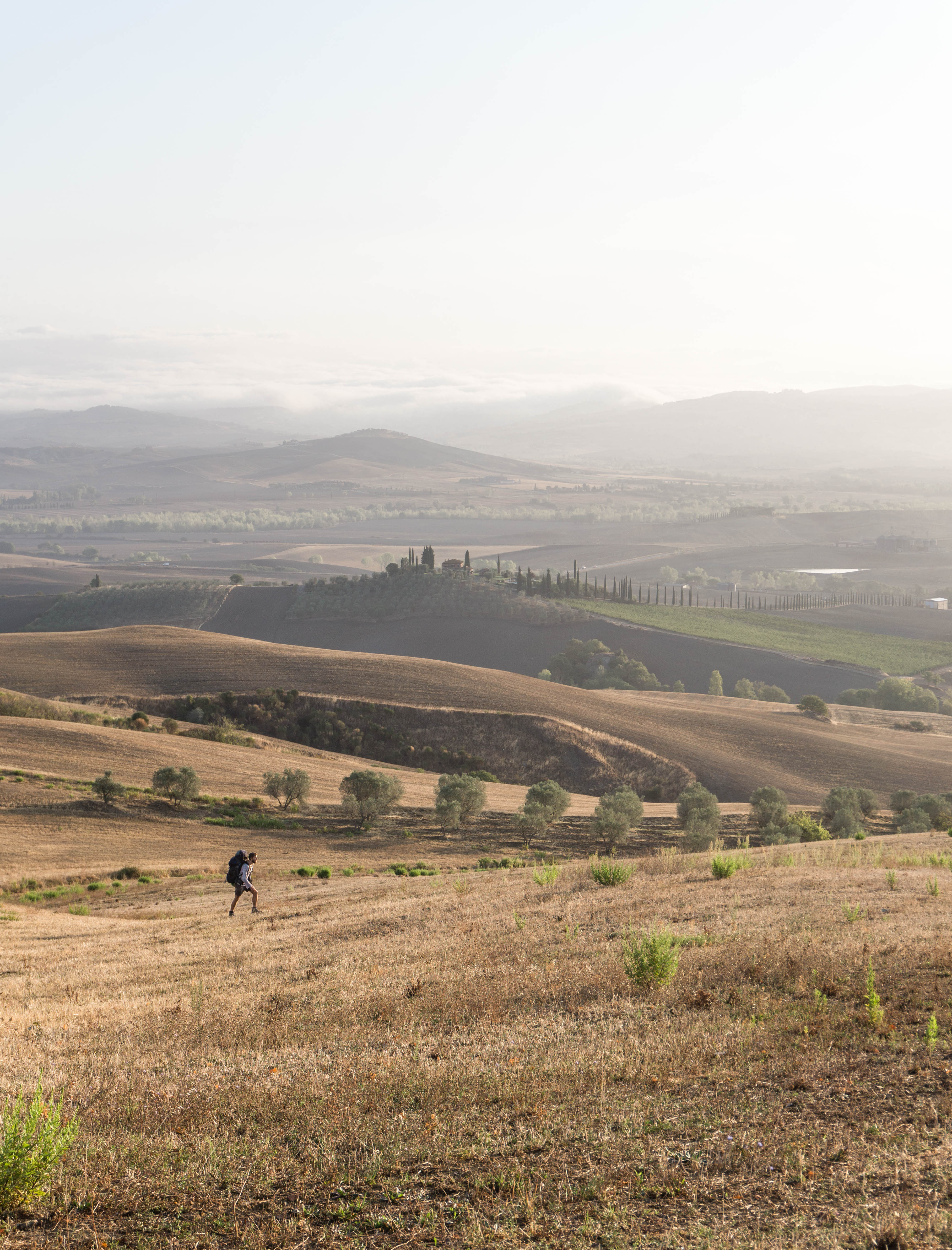
And we carried on in this way until we met the steep road up to Radicofani, 896m above sea level.
Radicofani itself was a wonderful place, perched up high between Tuscany and Lazio. There was now a steady stream of pilgrims, as well as tourists stopping here to enjoy all the Valdorcia loveliness (err, who could blame them?).
We stayed in a tiny ostello right in the middle of the village, watching the bustle of this mix of visitors and locals out on the steep streets.
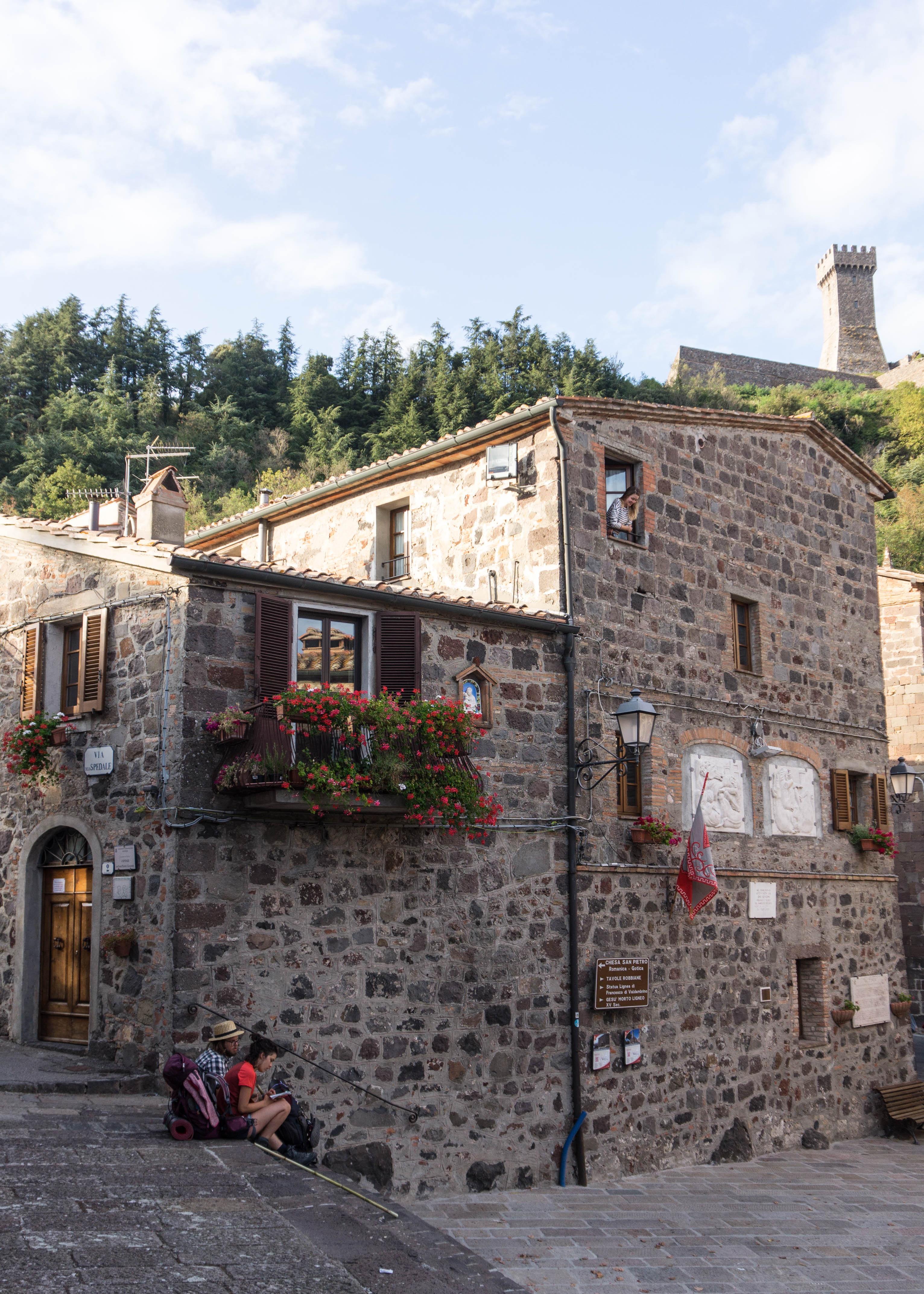
Apparently to demonstrate how high up we really were, the next morning began covered in fog, thicker than we’d ever walked through.
It seeped through the streets, clung in droplets on our hair, and covered the valleys below in thick white cloud. It swirled around us as we walked down the hill. The tower of Radicofani popped out for a few minutes before it melted away for good.
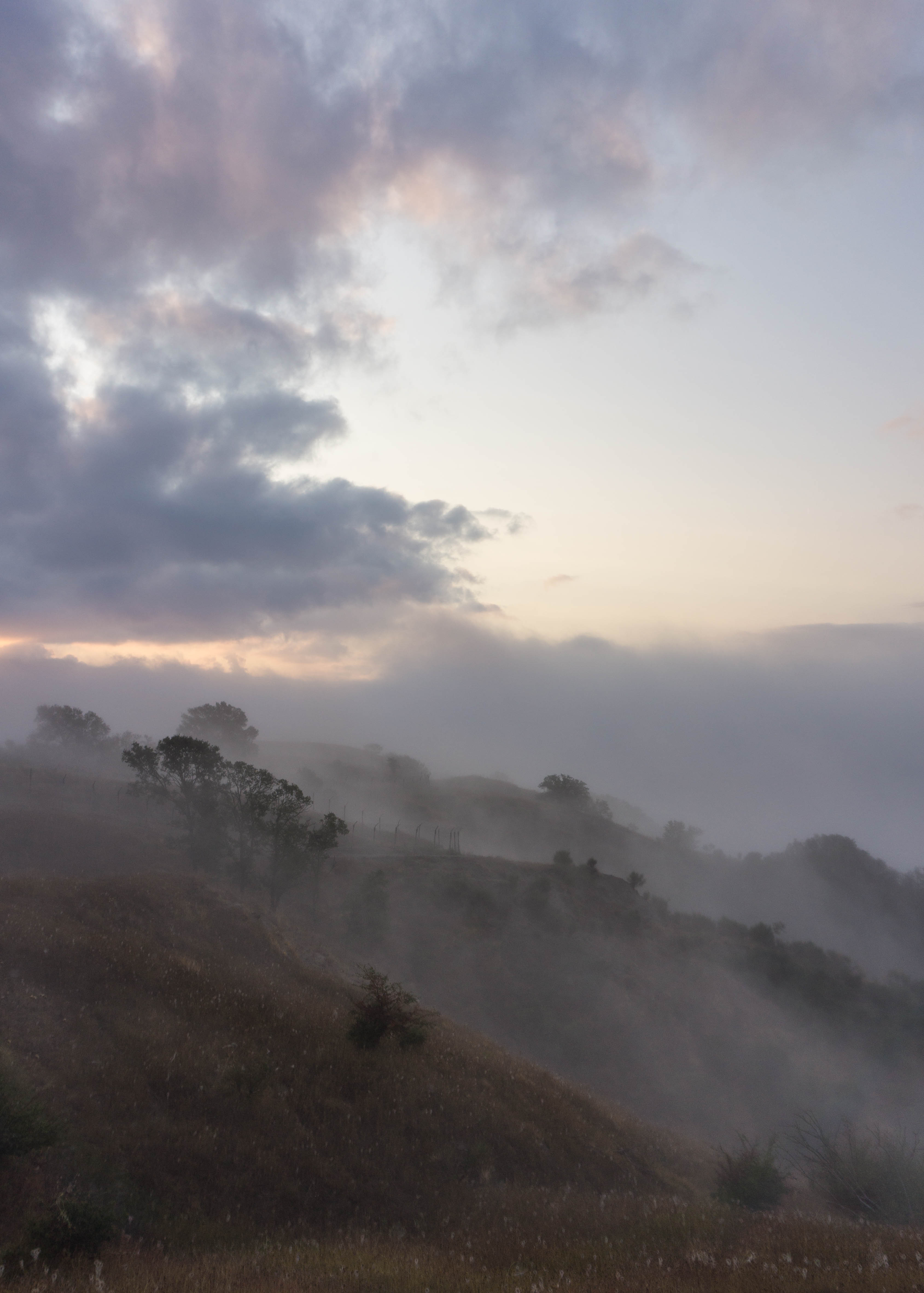
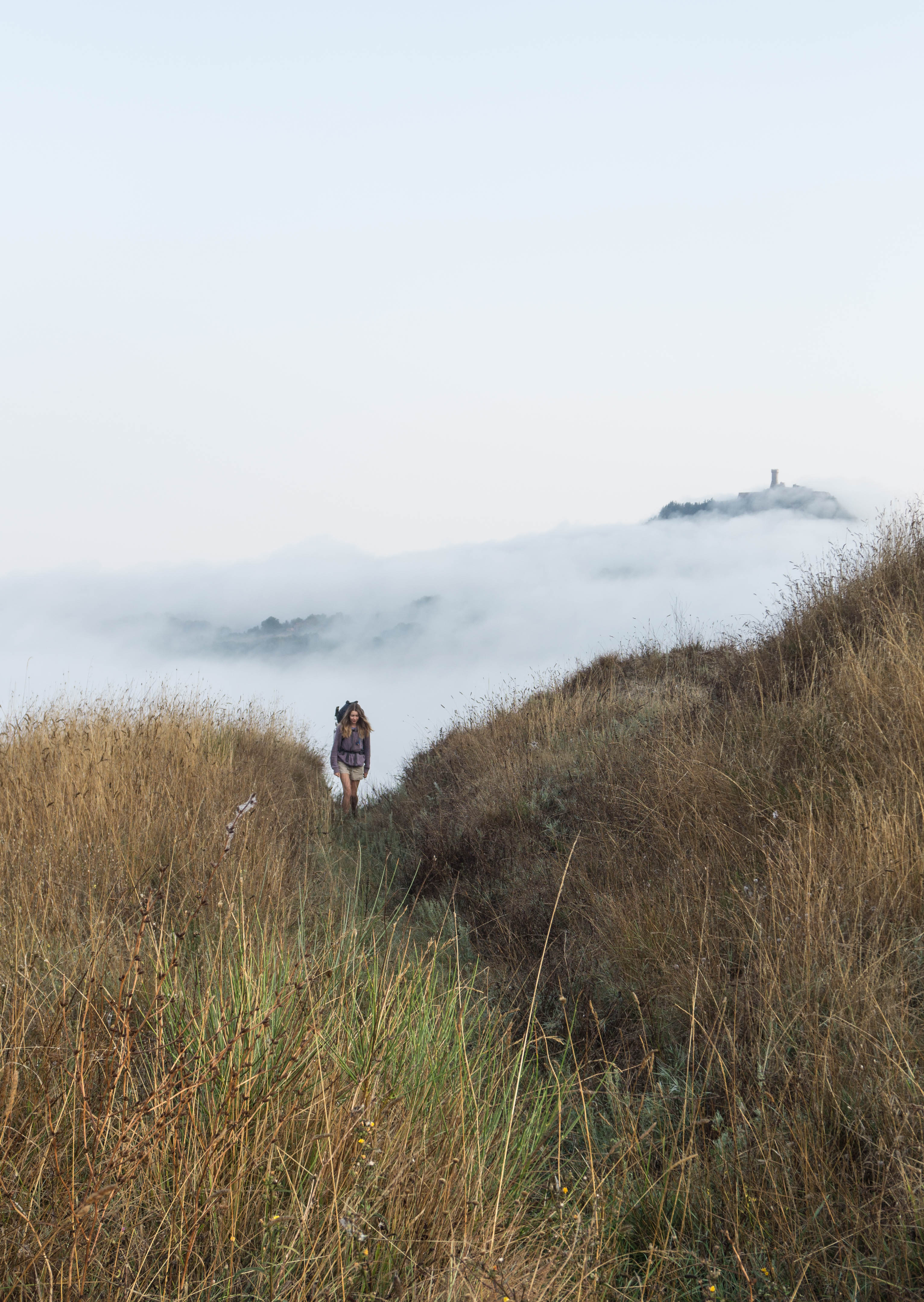
A beautiful, weird ending to our walk in Tuscany. But some of the best for landscapes, for colours, for undisturbed country. We might never stop talking about the Valdorcia to anyone who will listen!
At the bottom of the hill, we passed the sign welcoming us to Lazio, and felt one of those Big Moments come upon us.

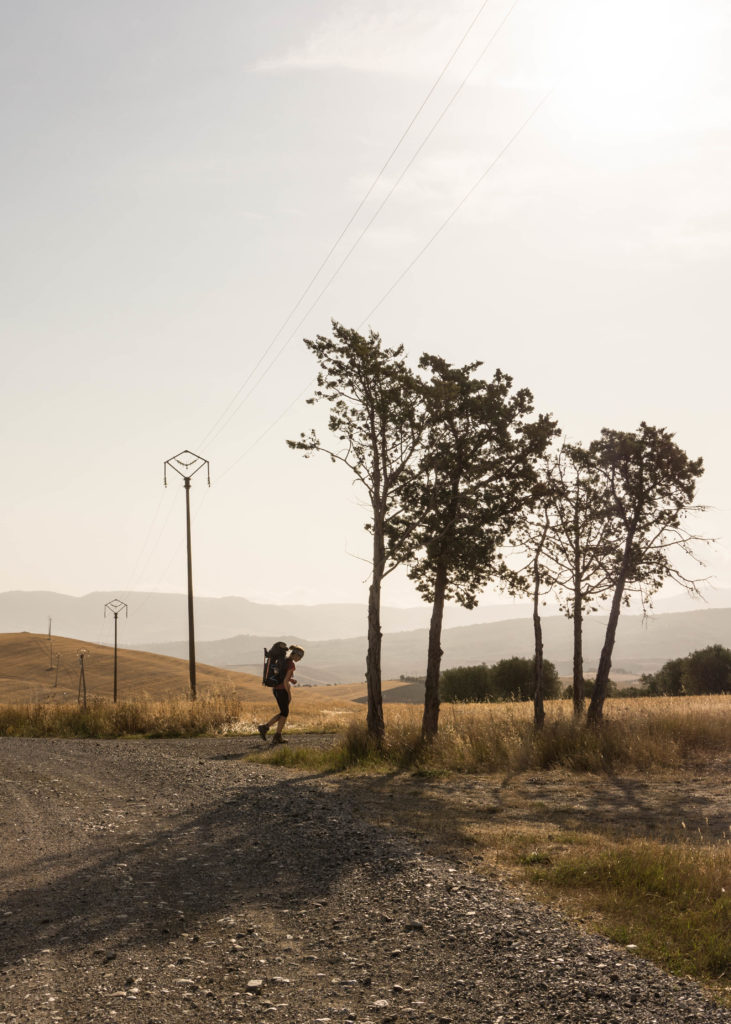
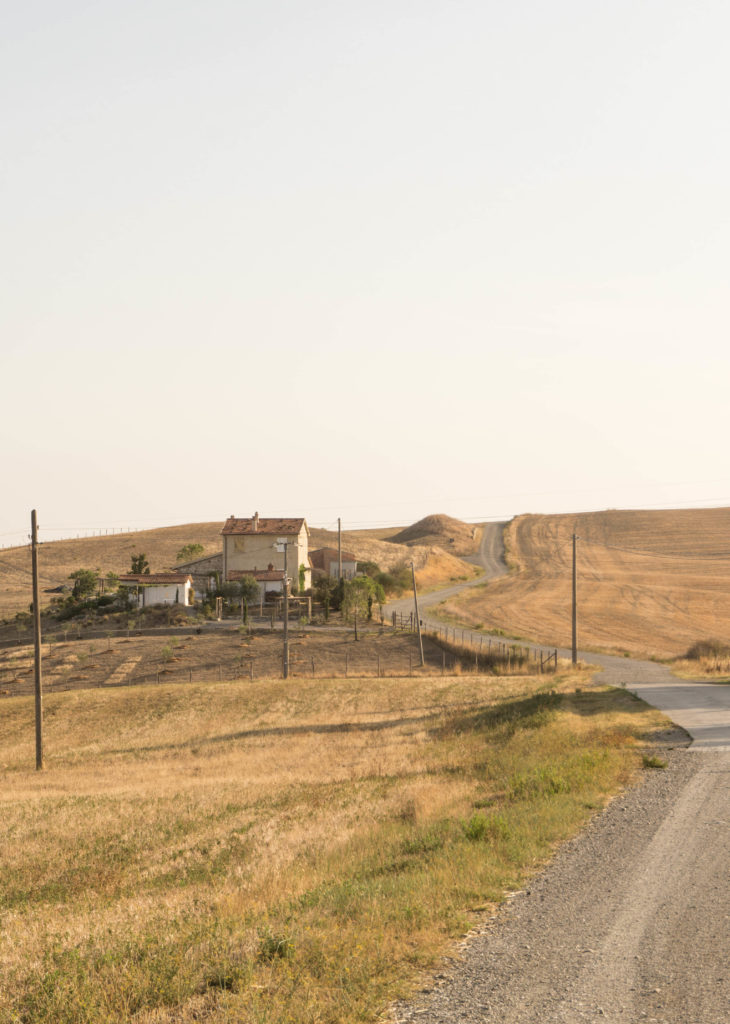
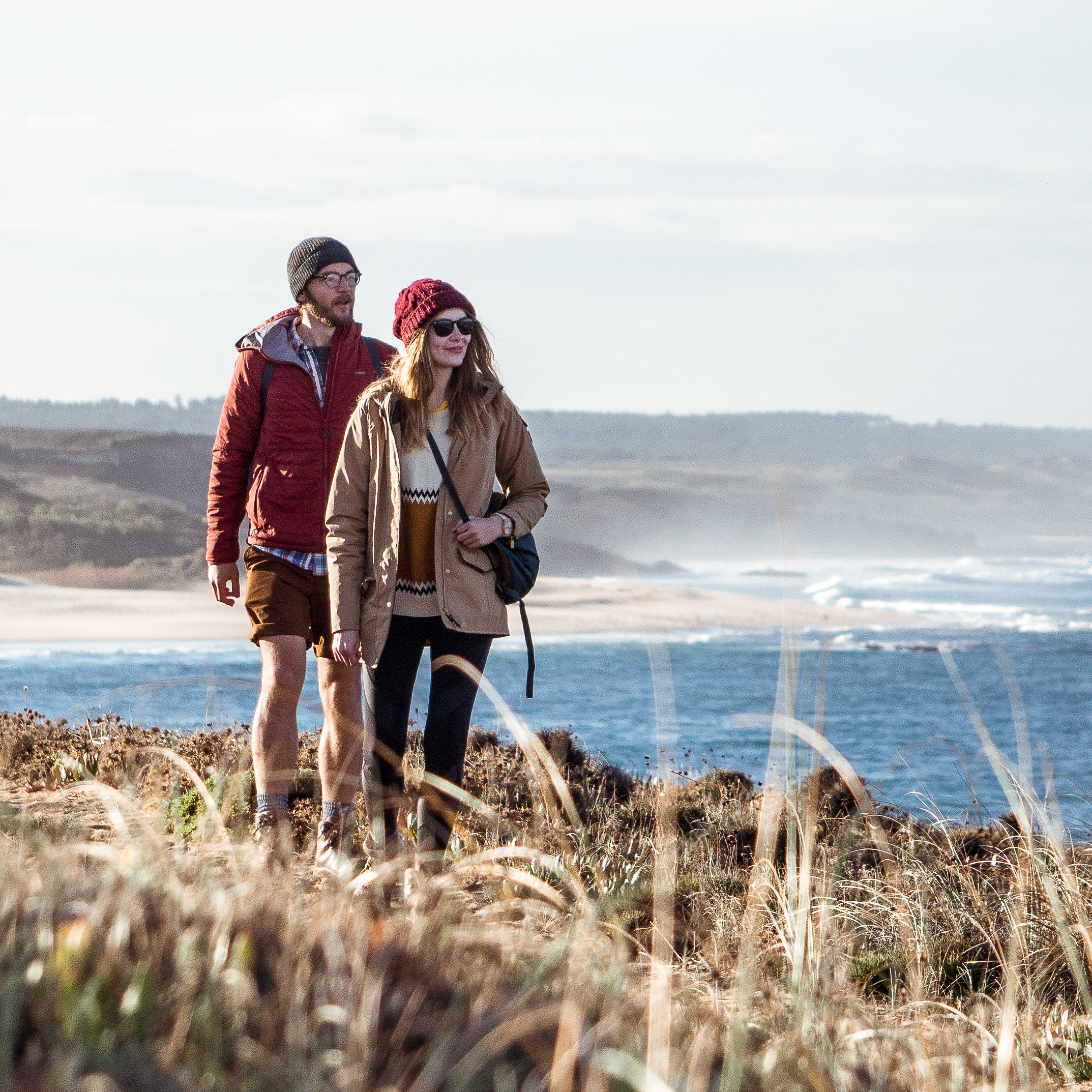
Hi guys,
I’ve just found your blog and have loved reading about your trips.
My boyfriend and I have 2 weeks at the end of March for a little adventure 🙂
I was wondering whether you think there’s anything to separate doing this route or Rota Vicentina at this time of year (price, weather, overall experience)? We’re finding it hard to decide!
Thanks so much xo
Hi Beth, glad you found us! At the end of March, south-west Portugal and the Rota Vicentina will be perfect. And 2 weeks is a great length of time to do it.
I’d say do the Rota Vicentina and aim to do a longer section of the Via Francigena, for example San Miniato to Radicofani.
Hope this helps.